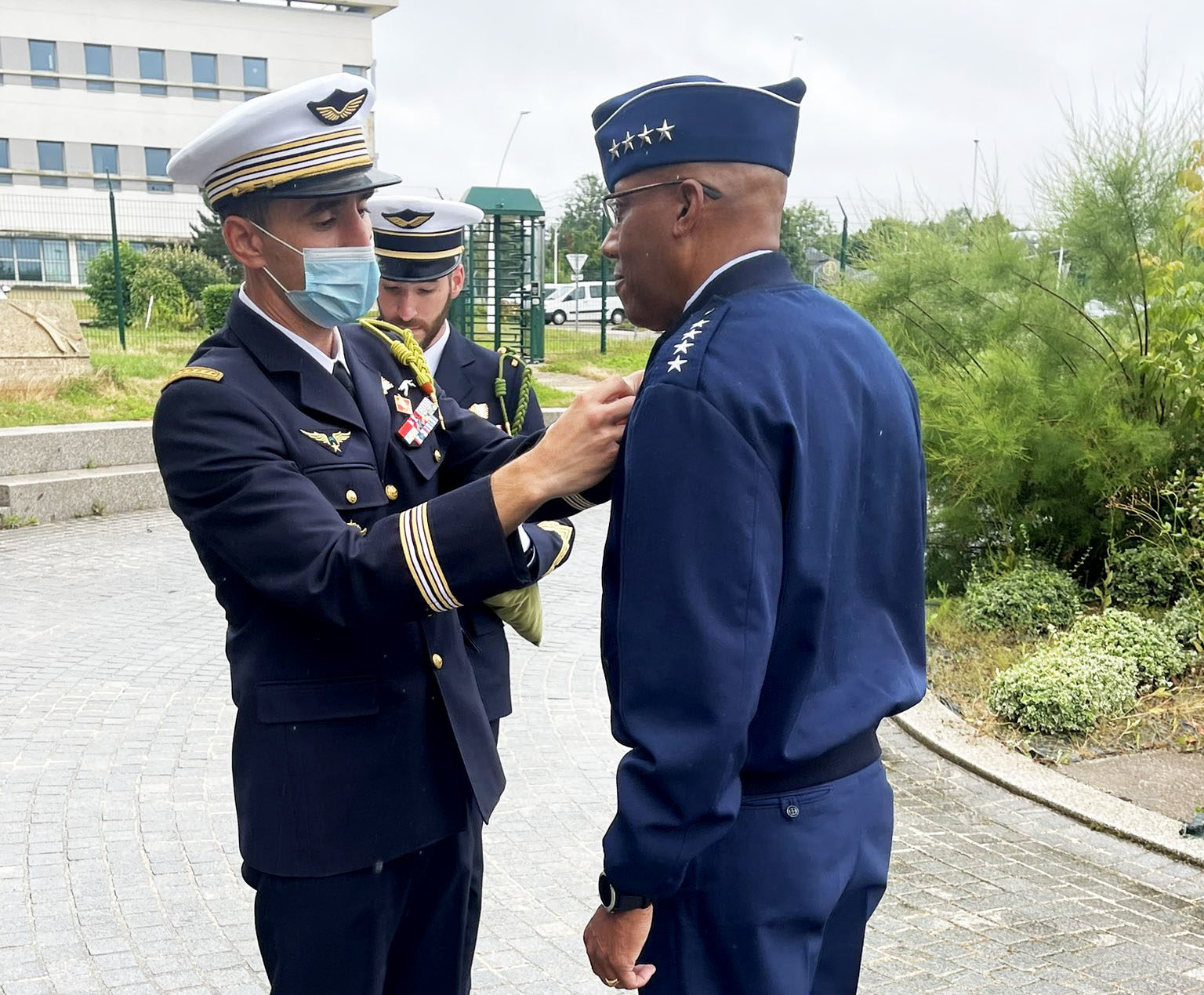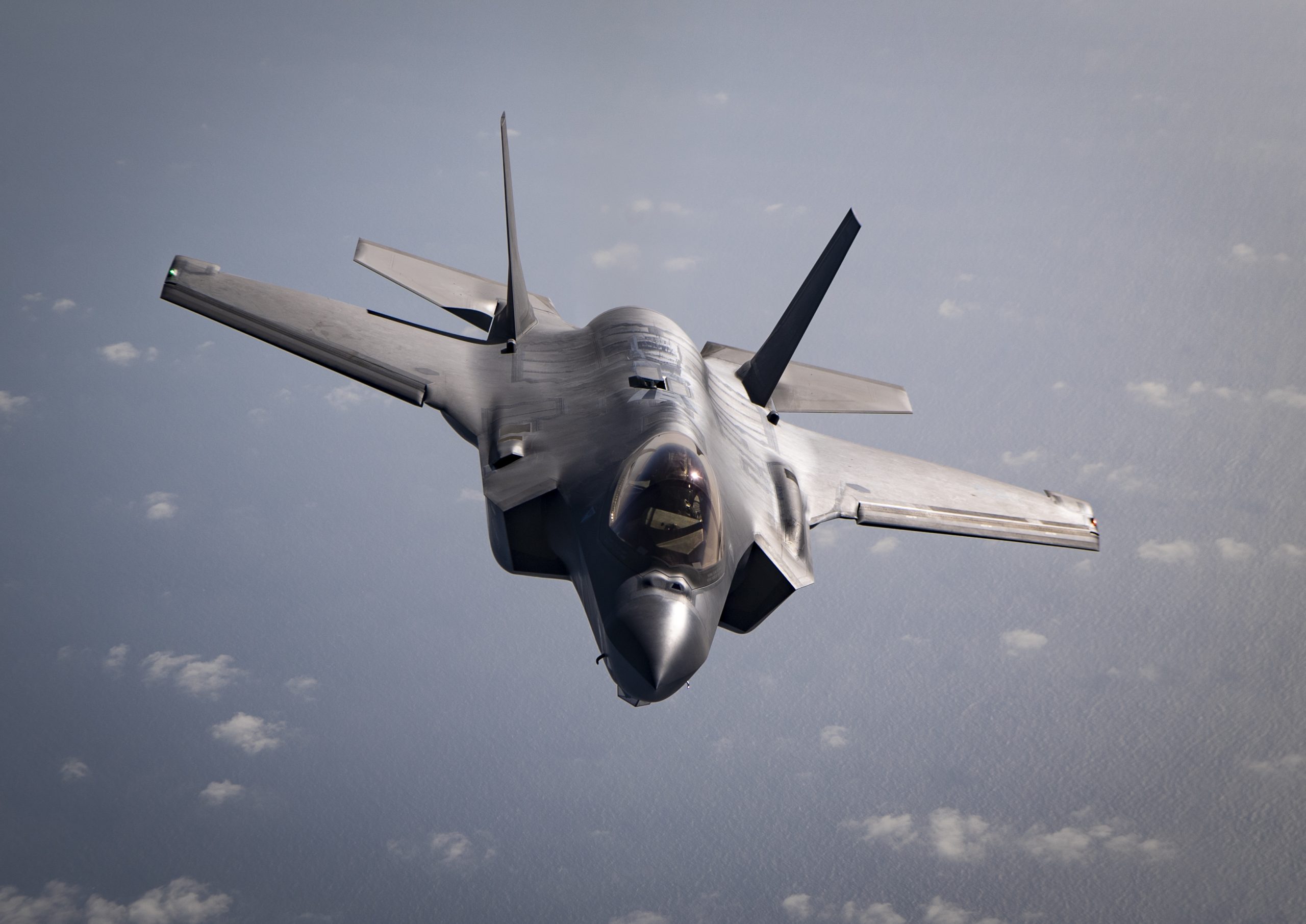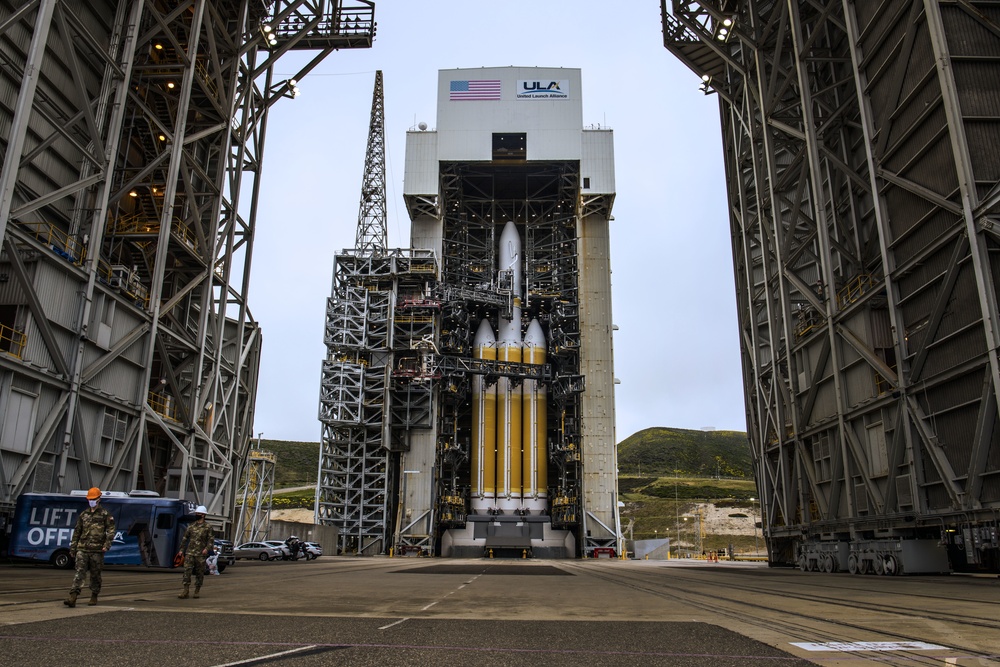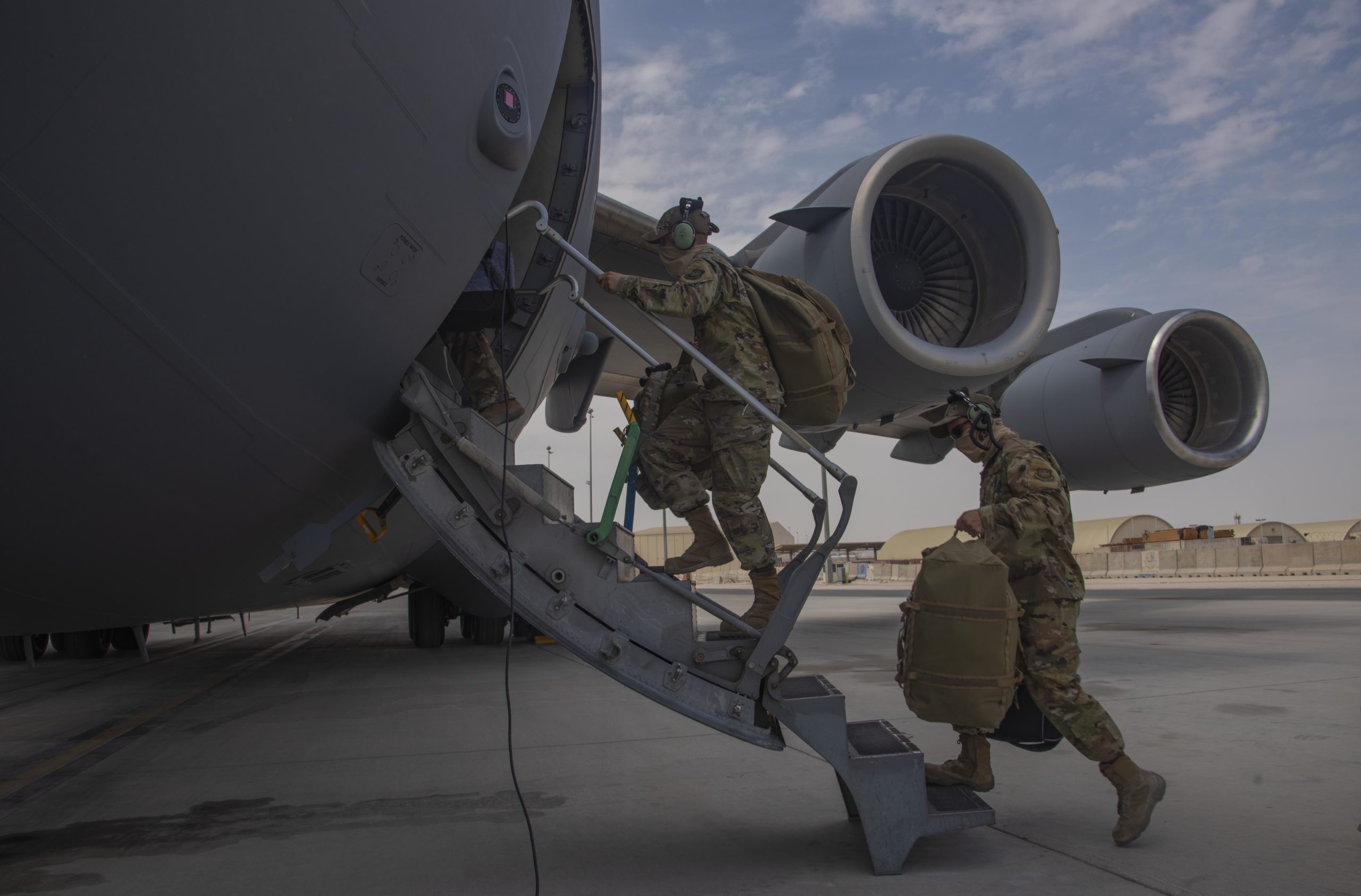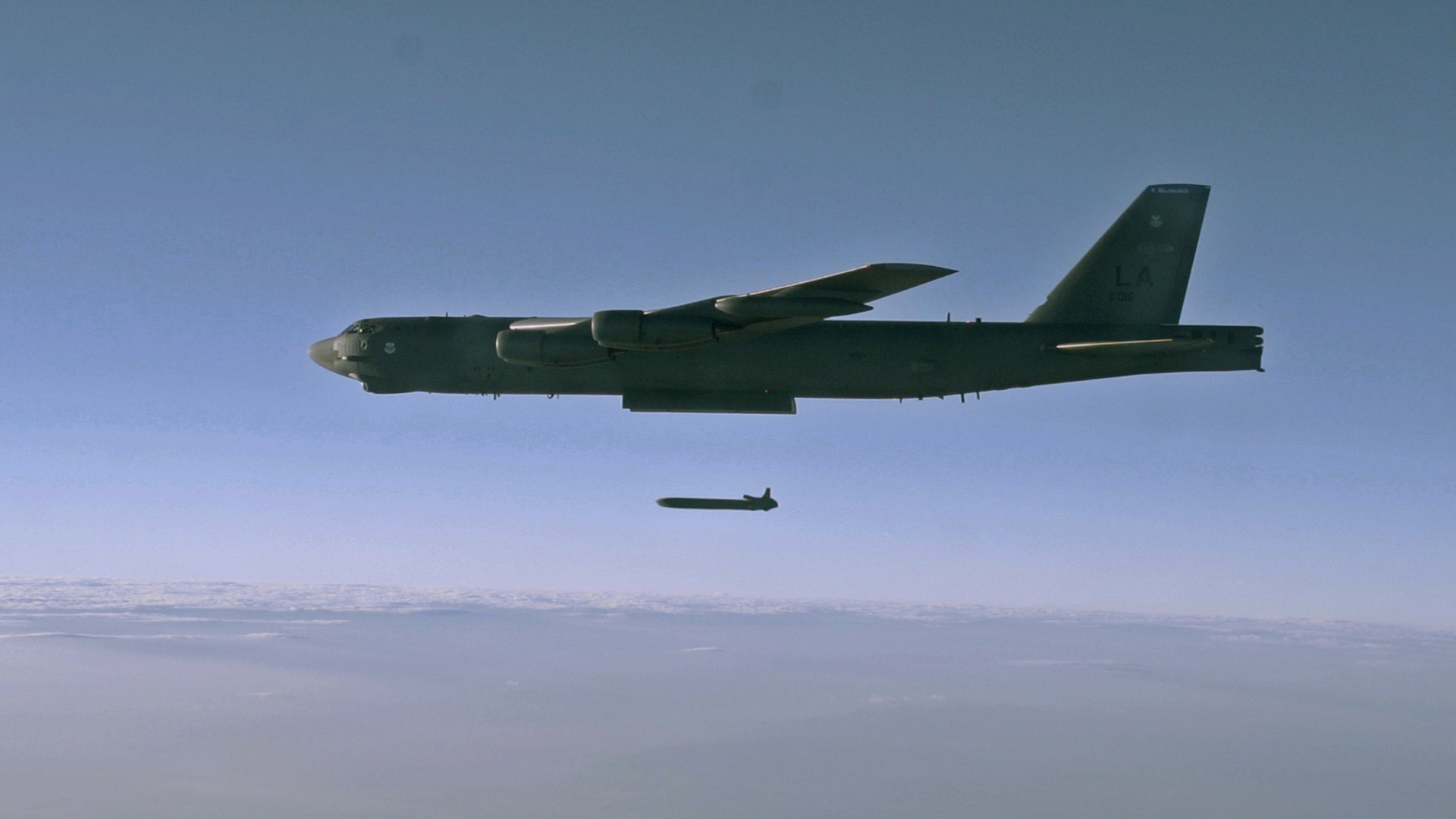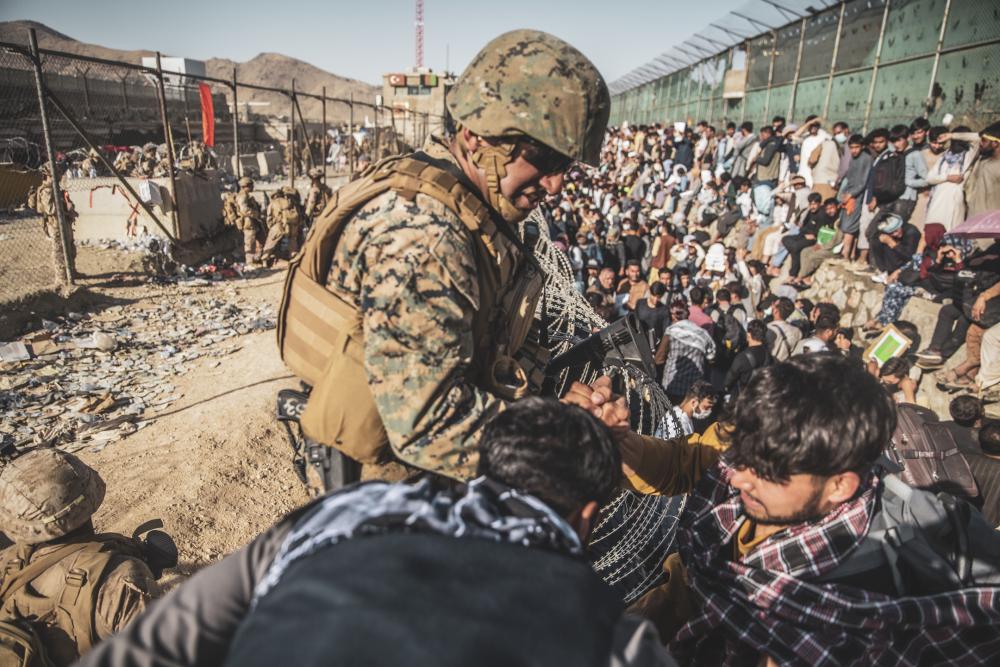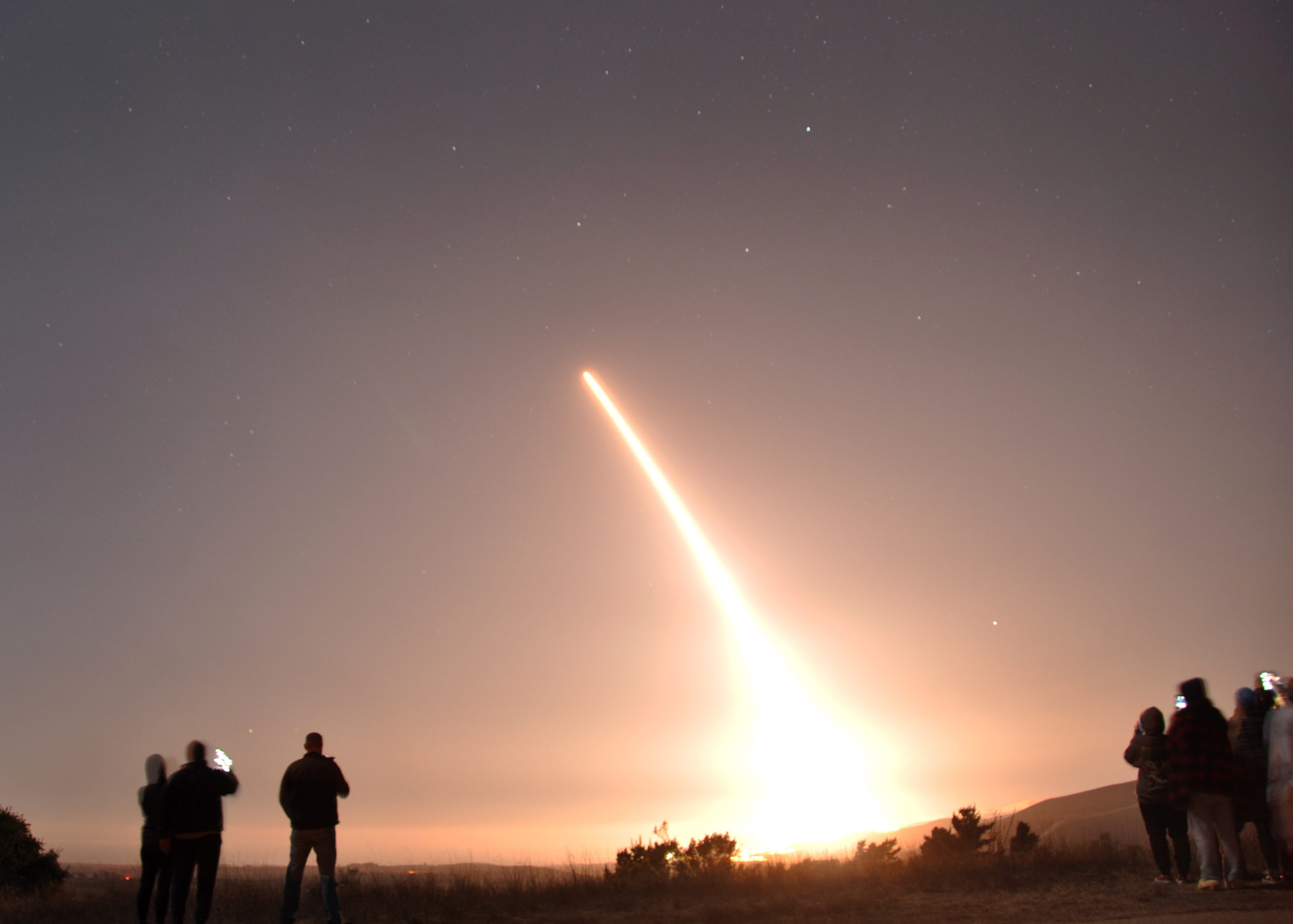The French Air and Space Force’s Fighter Squadron 2/4 Lafayette awarded Air Force Chief of Staff Gen. Charles Q. Brown Jr. its insignia pin, making him only the third American to receive the high honor.
The award was announced by the Air Force on Aug. 30 after a July visit by Brown to the Saint-Dizier/Chaumont defense base in northeast France.
“The pin the escadrille presented to me is part of a 105-year, proud tradition, and this honor represents a strong bond between our two nations,” Brown said, according to an Air Force release.
The French Ministry of Defense told Air Force Magazine that Brown visited with Major General of Air and Space, Army Lt. Gen. Frédéric Parisot, on July 22. At the air base, Brown viewed the Lafayette fighter squadron and technical support squadron, participated in a flight simulator exercise, and viewed a medium-range SAMP Mamba ground-to-air missile defense system.
The Lafayette fighter squadron’s history dates to World War I, when it was known as the American Escadrille N124. At the time, it was manned with 38 American volunteers, mostly aviators, fighting under French command.
Brown is just the third American to receive the Lafayette squadron pin, joining President Dwight D. Eisenhower and Amelia Earhart.
A French press release noted the recent return of the French 4th Fighter Squadron, which had joined F-22 Raptors in commemoration of U.S. independence.
“This visit confirms the will of the two nations to strengthen bilateral cooperation,” the French release stated.
Brown was also presented with a painting by French artist Béatrice Roche Gardies of Eugene Bullard, who in August 1917 became the first African-American military pilot to fly in combat.
Bullard at the time was living in Paris and enlisted in the French Foreign Legion, earning the Croix de Guerre and reaching the rank of corporal. After retirement, Bullard fought again in World War II following the German invasion of France in May 1940.
Bullard was posthumously appointed second lieutenant in the United States Air Force on Sept. 14, 1994. The painting will be displayed at the Pentagon’s United States Air Force Art Collection for three years.
“I’m humbled to receive these honors,” Brown said in a press release. “Heroes like Eugene Bullard made incredible advancements to aviation and paved the way for so many.”
